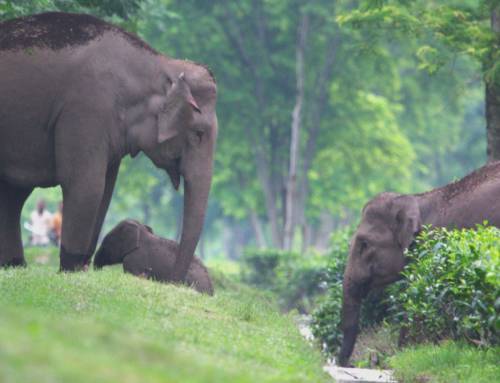Research Article: Puri, M., Srivathsa, A., Karanth, K. K., Kumar, N. S., & Karanth, K. U. (2015). Multiscale distribution models for conserving widespread species: The case of sloth bear Melursus ursinus in India. Diversity and Distributions, 21(9), 1087–1100.
Blog Author: Vinni Jain
Key Takeaways:
- Understanding the factors that affect the distribution of mammals is critical for conservation. This study examines sloth bear distribution across India and, on a more local scale (38, 540 km²), across the Western Ghats.
- The authors used a combination of expert interviews and field-based surveys to generate estimates of the percentage of area occupied by bears.
- Across India, bears were estimated to occupy 67% of plausible habitat, with bear presence positively influenced by deciduous forests, scrub, barren areas, and cultural tolerance.
- Across the Western Ghats, bears were estimated to occupy 61% of the area, with bear occurrence probabilities increasing with forest cover and topographic heterogeneity, and decreasing with precipitation and human disturbance.
- The authors concluded from their findings that bears are widely present across both protected and unprotected forests, and have large overlaps with human-use areas.
- They proposed that bears should be considered an umbrella species to secure unprotected habitats.
To protect and conserve India’s native biodiversity, it is essential to know how and where wildlife species are distributed. Having reliable and updated maps of species’ distributions as well as a clear understanding of their ecological requirements is crucial for land-use planning and policy-making, especially across dynamic and diverse landscapes. However, many mammals of conservation importance in India remain understudied, with distribution maps being inaccurate or outdated.
The sloth bear (Melursus ursinus) is one such large terrestrial mammal found widely distributed across the Indian subcontinent. It has a distinct appearance, with shaggy fur, a mane around its face, long sickle-shaped claws, and white markings on its chest. Sloth bears were commonly tamed and used as performing animals, and were also hunted for meat and body parts. This, combined with habitat loss and degradation, have resulted in an estimated 30-49% decline in sloth bear populations over the last 30 years. In order to prevent further declines there is thus an urgent need to understand their distribution patterns and habitat requirements.
In this paper, led by Dr. Mahi Puri, the research team set out to assess sloth bear distribution across two scales: nationwide, and locally across the Malenad landscape of the Western Ghats. The researchers created 1,326 grid cells of 2,818 sq. km. each, covering the entire nation of India, and collected data across 1,037 cells representing plausible bear habitat. By contacting more than 100 Indian wildlife experts in 2006, they were able to collect bear presence information for each of these cells. To study bear distribution patterns at a more regional scale, the team divided the Malenad landscape into 205 grid cells of 188 sq. km, each. They assessed bear presence by walking along dirt roads and trails and searching for fresh sloth bear signs such as droppings or tracks!
The interviews with wildlife experts indicated that bears occupied around 67% of plausible bear habitat across India. At a regional scale, the sign surveys revealed that bears occupied 61% of the sampled area in Malenad. The bears had a clear preference for deciduous forests, scrubland, and barren areas free from human disturbance. Bears also preferred heterogeneous, rough terrain, potentially due to the availability of ample denning and resting sites and the lack of humans and agricultural activity. Surprisingly, bear presence was not just recorded from National Parks or Wildlife Sanctuaries, but also from forests outside protected areas. Thus, despite their overall preference for areas with less human disturbance, bears were found to be present in unprotected forest areas surrounded by settlements and crop fields.
This research paper was critical in generating nationwide and landscape-level distribution maps for sloth bears in India. The discovery that not just forests, but scrub, barren lands, and rough terrains are also critical habitats for bears was an important finding for land-use policy. Where possible, such habitats should be prioritized for bear conservation rather than cleared away for industrial or commercial use. The team concluded their study by suggesting that sloth bears should be recognised as an umbrella species due to their vast distribution, important ecosystem functions, and vulnerability to threats. The protection of India’s “bhaloos” would then lead to the protection of vast stretches of forests and other landscapes while also securing the conservation of several other species that share the same habitats.
You can access the original article here.
Key Words: Distribution, occupancy, detection probability, India, spatial modeling, Western Ghats




